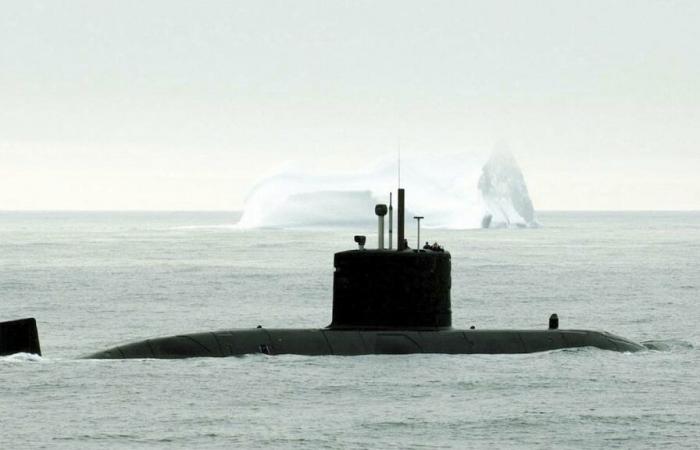OTTAWA | The twelve submarines that National Defense wants to buy to replace our boats which are taking on water will not be capable of breaking the ice to surface in the Arctic, unless there is a technological revolution.
This is no longer speculation. Ottawa is indeed in discussions with manufacturers. A request for information was launched in September and around twenty manufacturers responded to the call before the deadline of November 18, according to our information.
“I’m looking for something that’s already in production, because I’m in a hurry,” Defense Minister Bill Blair said Monday on the sidelines of a military conference.
The bill for the new fleet of submersibles is still unknown. But two candidates stand out from the crowd, says Blair Shaw, a defense consultant engineer who has dived aboard several of these machines: the TMS type 212CD-E, co-developed by Germany and Norway, and the KSS- III, produced by South Korea.
Modeling of the future Type 212CD submarine developed by Germany in collaboration with Norway.
TKMS
Climate change
These two submarines use technology that allows them to stay in the depths for several weeks without returning to the surface to replenish their oxygen.
On the other hand, they have not demonstrated that they can break the ice to return to the surface if necessary. Currently, only nuclear-powered submarines are capable of such a feat, says Craig Stone, associate professor emeritus at the Canadian Forces College.
Russian nuclear submarine emerging from the Arctic ice.
Ministry of Defense of the Russian Federation
However, breaking the ice may soon no longer be essential due to global warming, Stone points out. Climatologists predict that the pole will be ice-free for part of the year by 2050.
However, it will probably take us two to three decades to acquire new submarines, underlined David Perry, president of the Canadian Institute of World Affairs, before the Senate. In fact, “we should be thinking about the operating environment that will exist in 20 to 70 years, not today,” he said.
Two favorites
The two German-Norwegian and South Korean submarines therefore present themselves as good options, capable of launching and recovering underwater drones which can patrol where crews cannot go.
For Mr. Shaw, the South Koreans are favorites because they are capable of delivering a submersible in just four years, a record. Vice-Admiral Angus Topshee, Commander of the Royal Canadian Navy, also visited Korea in recent days.

Vice-Admiral Angus Topshee, Commander of the Royal Canadian Navy, visited South Korea in November 2024 to meet with submarine manufacturers. Seen here with Hanwa Ocean representatives.
Photo by Hanwa Ocean
But Patrick Lagassé of the Norman Paterson School of International Affairs at Carleton University is banking more on Germany and Norway, because these two countries are members of NATO. This summer, Canada also signed a letter of intent with a view to forming a trilateral defense and security pact with them for the North Atlantic and the Arctic.
On this subject, Minister Blair declared on Monday: “The navy will tell me which submarines would best meet its needs, but what I want is a relationship with the nation with which I am going to do business. »
Our four Victoria class submarines built at the end of the Cold War will have to be stored around 2035. Already, they spend much more time in dry dock than at sea given the significant amount of work they require. The Public Treasury has sunk nearly $2 billion in maintenance since 2017, according to data obtained by Le Journal.
Do you have any information to share with us about this story?
Write to us at or call us directly at 1 800-63SCOOP.








